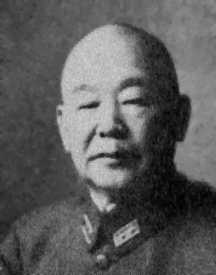Yoshitsugu Tatekawa
| Yoshitsugu Tatekawa | |
|---|---|
 General Yoshitsugu Tatekawa | |
| Born |
October 3, 1880 Niigata prefecture, Japan |
| Died | September 9, 1945 (aged 64) |
| Allegiance | Empire of Japan |
| Service/branch |
|
| Years of service | 1901 -1945 |
| Rank | Lieutenant General |
| Commands held |
IJA 10th Division IJA 4th Division |
| Battles/wars |
Russo-Japanese War Second Sino-Japanese War World War II |
| Other work | Ambassador to the Soviet Union |
Yoshitsugu Tatekawa (建川 美次 Tatekawa Yoshitsugu, 3 October 1880 – 9 September 1945) was a lieutenant-general in the Imperial Japanese Army in World War II. He played an important role in the Mukden incident in 1931 as major-general and he concluded the 1941 Soviet-Japanese Neutrality Pact in 1941 as ambassador to the Soviet Union.
Biography
Tatekawa was a native of Niigata city, Niigata Prefecture and graduated from the 13th class of the Imperial Japanese Army Academy in 1901. He served with distinction on the Russo-Japanese War of 1904-1905, taking part in daring reconnaissance patrols deep within Russian lines. In 1909, he graduated from the 21st class of the Army Staff College.
From 1920-1922, Tatekawa served as a member of the Japanese delegation to the League of Nations. After his return to Japan, he was attached to the IJA 1st Cavalry Regiment, and became commander of the IJA 5th Cavalry Regiment from 1923-1924.
From 1924-1928 Tatekawa was Chief of 4th Section (European & American Intelligence), 2nd Bureau, Imperial Japanese Army General Staff, overseeing military intelligence operations in the Soviet Union. He subsequent served as military attaché to China from 1928-1929.[1]
With tensions rising in Manchuria between the Japanese Kwantung Army and Chinese forces, Tatekawa was dispatched by Japanese Minister of War Jirō Minami to go to Mukden and prevent the Kwantung Army from making any precipitous movement that would involve Japan in a war with China. Although the Kwantung Army was nominally subordinate to the Imperial General Headquarters, its leadership demonstrated significant self-determination, as shown by their independent plot of the assassination of Zhang Zuolin in 1928.[2]
However when Tatekawa arrived in Mukden, he did not prevent the invasion and occupation of Manchuria. Instead, after he informed the Kwantung Army command that Tokyo expressly forbid any action without orders, he purposely got himself drunk until he fell asleep, while the explosion at the South Manchurian Railway tracks took place, starting the Mukden Incident of 1931.[3] Later on, he justified his failure by stating that he did not arrive on time to stop the plot.
After the Mukden Incident, Tatekawa was sent to Switzerland from 1931-1932 as member of the Japanese delegation to the Geneva Disarmament Conference. On his return to Japan in 1932, he was promptly promoted to lieutenant general. From 1932-1933, he served as the Permanent Representative of the Japanese Army to the League of Nations.
In 1934, Tatekawa became commander of the IJA 10th Division, and in 1935 was reassigned to be commander of the IJA 4th Division. He was implicated in the February 26 Incident of 1936, and was forced into retirement from military service.
In 1940, Tatekawa was appointed as ambassador to the Soviet Union. He played a crucial role in negotiating the Soviet-Japanese Neutrality Pact of 1941, which was signed only two years after the Soviet-Japanese Border Wars. Tatekawa also brokered a similar neutrality pact between the Mongolian's People Republic and Manchukuo. He returned to Japan in 1942, and died in 1945. His grave is at the Tama Cemetery in Fuchu, Tokyo.
Notes
References
- Bix, Herbert P. (2000). Hirohito and the Making of Modern Japan. HarperCollins. 10-ISBN 0-06-019314-X; 13-ISBN 978-0-06-019314-0; OCLC 247018161
- Dorn, Frank (1974). The Sino-Japanese War, 1937-41: From Marco Polo Bridge to Pearl Harbor. MacMillan. ISBN 0-02-532200-1.
- Jansen, Marius B. (2000). The Making of Modern Japan. Harvard University Press. 10-ISBN 0674003349/13-ISBN 9780674003347; OCLC 44090600
External links
- Ammenthorp, Steen. "Tategawa, Yoshitsugu". The Generals of World War II.
- Chen, Peter. "Tategawa Yoshitsugu". WW2 Database.
| Preceded by Shigenori Tōgō |
Ambassador of Japan to the Soviet Union 1940-1942 |
Succeeded by Naotake Satō |